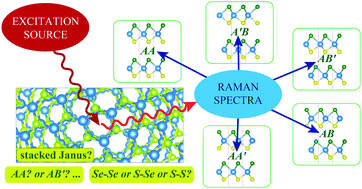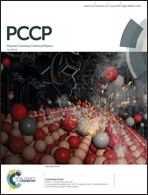Bilayers of Janus WSSe: monitoring the stacking type via the vibrational spectrum
Abstract
Motivated by the recent successful synthesis of Janus type single layers of transition metal dichalcogenides, we investigate the stability, vibrational and electronic properties of the Janus single layer structure of WSSe and its bilayers by means of density functional theory. The structural and vibrational analysis show that the Janus single layer of WSSe forms a dynamically stable structure in the 2H phase. Owing to its non-centrosymmetric structure, the Janus WSSe single layer has two in-plane (E) and two out-of-plane (A) Raman active phonon modes. The eigen-frequencies of the prominent Raman active modes are calculated to be 277 (A) and 322 (E) cm−1. Similar to single layer WS2 and WSe2, Janus WSSe is a direct band gap semiconductor that has two electronically different faces. In addition, the possible bilayer stacking orders of the Janus WSSe single layers are investigated. It is found that there are 3 stacking types of bilayer Janus WSSe and each stacking type has distinctive Raman characteristics in its vibrational spectrum. Our results show that thanks to the vibrational characteristics, which stem from the distinctive interlayer interactions at different sides, the stability and stacking types of the bilayer of WSSe Janus structure can be monitored.



 Please wait while we load your content...
Please wait while we load your content...